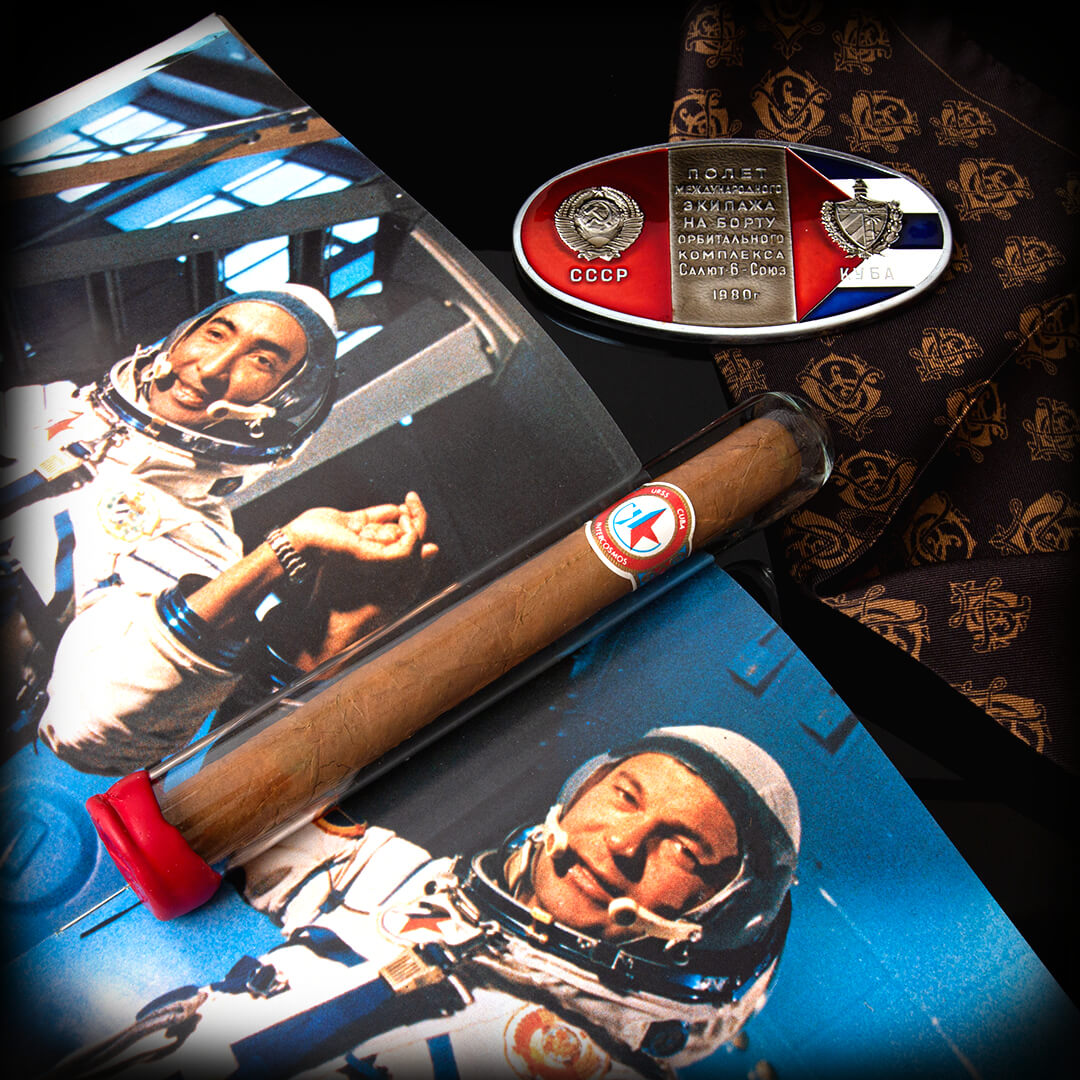Cosmos Cigar
The cigar that accompanied the first Cuban cosmonaut during the Intercosmos program in 1978.
Humans have always been fascinated by the sky. The idea of sending objects or men into space was imagined by science fiction authors hundreds of years before it was physically and materially possible.
Sending astronauts into space is an extremely complex and expensive process. Thus, every gram carried is counted and the objects that accompany them on their missions are examined by space agencies. However, as we often say in our articles, the Cuban cigar is a true national pride, so it was natural that among the objects that accompanied the first Cuban cosmonaut into the great interstellar void, he had a "Tabaco Habano", in other words, a Cuban cigar.
This space flight took place within the framework of a Soviet space program, created in 1978, aimed at promoting international cooperation in the field of space for peaceful purposes, called "Intercosmos". The countries affiliated to the program were part of the Eastern bloc or were socialist states. The program developed 26 scientific satellites and allowed the participation in space missions of about 15 nationals from the co-opted countries. One of them is Arnaldo Tamayo-Méndez, the first Cuban cosmonaut who, accompanied by a cigar, boarded Soyuz 38 alongside Soviet cosmonaut Yuri Romanenko.
The spacecraft took off from Baikonur, Kazakhstan on September 18, 1980 at 19:11:03 UTC. After a one-day solo flight, Soyuz 38 docked to the Soviet space station Salyut 6, launched in 1977.
In addition to verifying the proper conservation of a Cuban cigar in the universe, the crew of Soyuz 38 performed nine experiments. Various scientific works aimed at finding the reasons for the crew's space adaptation syndrome. Examples include changes in brain activity, changes in the structure and function of the foot, the effects of psychological stress during mission preparation, the launch of the flight, in weightlessness, or changes in blood circulation. Other mission objectives included Earth observation, observation of the solar system, and plant and crystal cultivation experiments.
Among the contributions of Arnaldo Tamayo-Méndez to the experiments carried out, the one for the balance of the cosmonauts in space was advantageous because he came from a tropical island country, unlike the Soviet crew, or from other countries in the area close to the USSR, allowing different results due to his metabolism.
The Soyuz spacecraft was composed of three elements. The orbital module, the descent module and the instrumentation/propulsion module. The crew occupies the central element, the descent module. The two other modules are jettisoned before re-entry into the atmosphere. They burn up in the atmosphere, so that only the descent module returned to Earth. 15 minutes before landing, four parachutes were deployed to slow down the vehicle's descent speed.
The main parachute slowed down the Soyuz to soften the landing which took place on September 26, 1980 at 15:54:27 UTC, 175 km southeast of Jezkazgan in Kazakhstan. The two men and the cigar arrived safely.
For its space flight, which lasted 7 days 20 hours 43 minutes 24 seconds, the "Cosmos Cigar" was conditioned in a "Glass tube", a relatively common conditioning during the 1950s and 1960s, especially for Partagás with the Crystal Tubos or the Visibles. The Glass tube appeared for the first time in the 1940s at the same time as the aluminum "tubos". Disappeared in the 1970s, cigars in "Glass tube" have nowadays become real objects of desire for collectors.
Although relatively common at the time, the Glass tube that accompanied Arnaldo Tamayo-Mendez aboard Soyuz 38 was sealed with a wax seal stamped with the coat of arms of Cuba.
The Cosmos Cigar is a Coronas Grandes (42 x 155 mm) and is dressed with a personalized band bearing the effigy of the mission. Also called Long Corona, it is an ancient vitola, introduced before the revolution and very popular in the past. However, while eight brands offered it in standard production until the early 2000s, only two brands, Cohiba and Montecristo, continue to offer it to this day with the Siglo III and Montecristo Tubos respectively.
Apart from the vitola, no other information makes it possible to identify one brand more than another for this "Tabaco Habano". One thing is certain, the Cuban know-how, this art of cigar rolling, of giving birth to the best Habanos, radiates far beyond Cuba!
For the acquisition of this exceptional piece, contact us on +41 22 552 2799


